-
 +9 +1
+9 +1Ultramassive black hole discovered by UK astronomers
An ultramassive black hole about 30bn times the mass of the Sun has been discovered by astronomers in the UK. Scientists at Durham University said the gargantuan black hole was one of the biggest ever found. The team described their findings, published in the journal Monthly Notices of the Royal Astronomical Society, as “extremely exciting”.
-
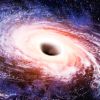 +23 +1
+23 +1Could There Be a Black Hole Lurking on the Edge of the Solar System?
Black holes have captured our imaginations for years: the idea of a near-invisible giant vacuum cleaner drifting through space, ready to devour the Earth in one gulp, is enough to keep anyone awake at night. But now, despite their mystical past, we understand more about black holes and how they work than we ever have.
-
 +27 +1
+27 +1We saw a black hole rip apart a star 8.5 billion light-years away
A black hole engulfing a star has been identified as 8.5 billion light-years from Earth. This is the most distant detection of this type of cataclysmic event. Stars that roam too close to black holes are very reckless. They usually end up torn apart by the extreme gravity of black holes, which readily gobble up this material. We have just detected the most distant of these events, announces the European Southern Observatory (ESO) on November 30, 2022. The detection is detailed in the journal Nature.
-
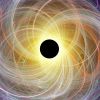 +18 +1
+18 +1Black Holes Finally Proven Mathematically Stable
In 1963, the mathematician Roy Kerr found a solution to Einstein’s equations that precisely described the space-time outside what we now call a rotating black hole. (The term wouldn’t be coined for a few more years.) In the nearly six decades since his achievement, researchers have tried to show that these so-called Kerr black holes are stable.
-
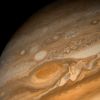 +13 +1
+13 +1Jupiter's Great Red Spot is even deeper than scientists had thought
It's hard to imagine the sheer scale of Jupiter's Great Red Spot from here on Earth, because the storm is so big that it could swallow our planet. Now, it turns out, the Great Red Spot isn't just wide: it's deep too, quite a bit deeper than anybody expected. Data from NASA's Juno spacecraft has shown that the behemoth storm extends as much as 310 miles (500 kilometers) beneath Jupiter's cloud tops. And the Jupiter maelstrom is linked to jets that go far deeper, hinting that the giant planet's upper and lower atmospheres are tied together.
-
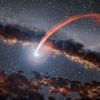 +20 +1
+20 +1This is What it Looks Like When a Black Hole Snacks on a Star
Analyzing observations of an X-ray flare and fitting the data with theoretical models, UArizona astronomers documented a fatal encounter between an unlucky star and an intermediate-mass black hole.
-
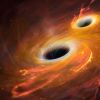 +19 +1
+19 +1What 50 gravitational-wave events reveal about the Universe
Astronomers observed 39 cosmic events that released gravitational waves over a 6-month period in 2019 — a rate of more than one per week. The bounty, described in a series of papers published on 28 October, demonstrates how observatories that detect these ripples — usually created by the merging of two black holes — have dramatically increased their sensitivity since the first identification was made in 2015.
-
 +11 +1
+11 +1Astronomers think they’ve found 19 alien objects lurking in the solar
By tracing back the orbits of these icy objects, some researchers think they have interstellar origins. Others, however, remain extremely skeptical
-
 +12 +1
+12 +1Cheops telescope begins study of far-off worlds
Europe's newest space telescope starts its study and characterisation of distant planets.
-
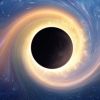 +19 +1
+19 +1Black holes shouldn't echo, but this one might. Score 1 for Stephen Hawking?
This isn't how black holes are supposed to behave.
-
 +9 +1
+9 +1‘Crazy’ Supernova Looks Like a New Kind of Star Death
Astronomers are mystified by a strange star explosion in a distant galaxy that might be a relic from an earlier cosmological era.
Submit a link
Start a discussion




















